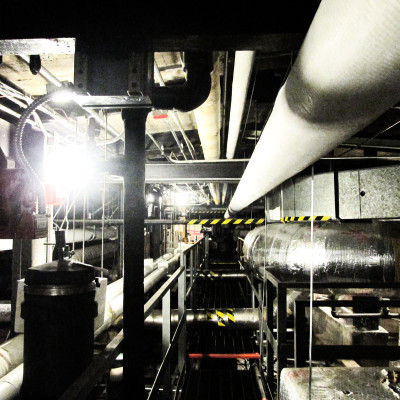Facilities Management – Behind the Scenes
 View of the complex systems that keep a facility in operation.
View of the complex systems that keep a facility in operation. The inner workings of a building can be vast and complex, but the systems designed to keep a building operational can only take up so much space in a building’s footprint. The duct work and piping create a maze of energy that is often hidden deep in a building’s recesses and kept from the occupant’s view. Facilities directors and managers are responsible for ensuring that a building’s operation and maintenance systems are up and running without a hitch. In addition, the facility manager is responsible for many other important tasks, such as disaster planning, protecting the health and safety of their building’s occupants, and security. Knowing every nook and cranny of a building, including what valve shuts off a specific wing’s water supply in an emergency situation, takes an experienced team. Prioritizing maintenance and renovation schedules without interrupting workflow or crucial lifesaving measures, such as surgery or intensive care in a health care facility, is of the utmost importance.
Building automation systems help facility managers hone in on any issues before they become a problem and help to improve operational efficiencies, but there is a lot that goes on behind the scenes of a building that the occupants are not aware of. This is the goal of the facility manager, to head off problems before the facilities’ occupants comfort or health is at risk from behind the scenes. Facilities managers have to be quick on their feet and have several resources at their fingertips in the event of an emergency.
On this Field Day Friday, we would like to take you behind the scenes from an environmental standpoint. Together, a building’s envelope and its operational systems greatly influence the indoor environmental quality. Temperature and humidity play an active role in occupant comfort and infection control. Clean duct work prevents dust, allergens and other irritants from contaminating the indoor air, while maintaining an appropriate relative humidity level helps to prevent mold growth. Not to mention the potential of hazardous materials such as asbestos containing materials, which was used to insulate some of the piping. If renovation activities disturb these materials, safety measures must be implemented to protect the health of the buildings occupants. That’s where Element comes in. We’ll provide the hazardous material survey or indoor air quality (IAQ) evaluation to help determine where those risk are and develop a strategy to reduce or eliminate those risks.